




Truly global and award-winning, the range is supported by expert portfolio managers, regional research teams and on-the - ground professionals with local connections
With over 450 investment professionals across the globe, we believe this gives us stronger insights across the markets in which we invest This is key in helping each trust identify local trends and invest with the conviction needed to generate long-term outperformance
Fidelity’s range of investment trusts :
• Fidelity Asian Values PLC
• Fidelity China Special Situations PLC
• Fidelity Emerging Markets Limited
• Fidelity European Trust PLC
• Fidelity Japan Trust PLC
• Fidelity Special Values PLC
The value of investments can go down as well as up and you may not get back the amount you invested Overseas investments are subject to currency fluctuations The shares in the investment trusts are listed on the London Stock Exchange and their price is affected by supply and demand
The investment trusts can gain additional exposure to the market, known as gearing, potentially increasing volatility. Investments in emerging markets can more volatile that other more developed markets Tax treatment depends on individual circumstances and all tax rules may change in the future
To find out more, scan the QR code, go to fidelity.co.uk/its or speak to your adviser.
06 Is the tide finally turning for retailers?
07 Nvidia market cap could hit $5 trillion, says analyst
08 The story behind a near-halving in YouGov’s share price
09 XPS Group ‘does the double’ with two years of 20% top-line growth
09 Ocado shares hit seven-year low after Canadian partner hits ‘pause’
10
Sainsbury’s ‘Food First’ strategy seen supporting midsingle digit sales growth
11 Import volumes are crucial for Constellation Brands’ continued run of form
12
Consumer spending revival provides pre-election fillip to UK economy
14 There are catalysts to power Dell shares 30% higher and it’s not just about AI
16 Take advantage of the deep discount to NAV at JPMorgan Global Core Real Assets UPDATES
18 Why you should stick with Rockwood Strategic
VIEW
What the election could mean for money, markets, stocks and sectors
Taking control of your retirement destiny. The case for consolidating your pensions
Will the third plenum prime
Meet the stocks behind the Indian market’s long-term gains and Indian elections, Chinese IPOs and implications of lingering dollar strength
What to do when you’re pushed into the next
What is pound cost ravaging and how can I guard against it?










Take control of your retirement destiny
Exploring the merits of pension consolidation, how it could help you save money and your different options.
What does the election mean for money and markets?
Examining different scenarios for 4 July and the likely impact on stocks, currencies and gilt yields, plus what Labour Party policies might mean for different sectors.





Examining if artificial intelligence represents a market bubble
Canvassing opinion from the managers behind two of the UK’s most popular technology investment trusts.
Did you know that we publish daily news stories on our website as bonus content? These articles do not appear in the magazine so make sure you keep abreast of market activities by visiting our website on a regular basis.
Over the past week we’ve written a variety of news stories online that do not appear in this magazine, including:




Leading the energy transition and driving positive impact on the environment and society.
VH Global Sustainable Energy Opportunities plc (GSEO) invests globally in a diverse range of sustainable energy infrastructure assets, working towards its strategic goals of accelerating the energy transition towards a net zero carbon world and providing shareholders attractive risk-adjusted returns.
Why invest in GSEO?
A vehicle presenting a distinctive combination of access, return and impact.
• Access to global private markets energy investments
• A geographically and technologically diversified portfolio of actively managed, high-impact investments which aim to ensure an effective and just climate transition

• Targeting total NAV return of 10%, net of costs and expenses
• Progressive dividend target of 5.68p reaffirmed for 2024
• High degree of inflation-linkage with over 90% of revenues that are inflation-linked
• Minimal interest rate risk exposure
• Creating environmental and social impact transforming lives and communities without compromising on returns
• Transparent impact reporting
• SFDR Article 9 fund


May’s sales rebound spells great news for the sector’s
According to the ONS (Office for National Statistics), retail sales volumes were much stronger than expected in May, following a wet April, in news which will be welcomed by the sector’s longsuffering constituents.
Volumes rose by 2.9%, rebounding from the 1.8% fall witnessed in a washout April, with non-food store sales volumes up 3.5% and food sales fattening up by 1.2%. Not only were in-store sales better, but online sales rose across all main sectors too, suggesting the tide may finally turning for retailers.
Clothing and footwear sales were up 5.4% in an auspicious sign for sector heavyweights ranging from Next (NXT) and Marks & Spencer (MKS) to Associated British Foods (ABF), the owner of discount fashion seller Primark.
Meanwhile, GfK’s long-running Consumer Confidence Index increased for the third month running in June driven by optimism about the UK economy over the coming 12 months.
Consumers appear ready to spend on discretionary items such as clothing and furniture again since inflation has fallen back more quickly

than pay growth in a boost to households’ real incomes.
Also positive for consumer sentiment is the drop in grocery price inflation, which fell for the sixteenth consecutive month to 2.1% over the four weeks to 9 June according to Kantar. With interest rates expected to be cut later this summer, the retail sector could soon receive a further injection of optimism.
The summer of sport has also kicked off and warmer weather is sweeping in, which should be good news for trainers-to-athletic apparel purveyor Sports Direct, part of the Mike Ashley-controlled retail conglomerate Frasers (FRAS). Shares in the FTSE 100 group gained ground on news (24 June) of a ‘multi-year’ partnership with e-commerce company THG (THG), a payments and logistics tieup that includes the integration of Frasers Plus, the FTSE 100 retailer’s credit and loyalty platform, into THG’s Ingenuity platform.
As part of the strategic tie-up, THG has agreed to sell its luxury goods websites to Frasers and will support the retail giant with courier management services and re-platforming its Australian fulfilment and logistics operations.
‘This could be strategically important for Mike Ashley’s empire,’ explained Dan Coatsworth, investment analyst at AJ Bell. ‘Frasers has already shown it is good at selling products to consumers, now it wants to be a bigger player in the payments game. Having THG as a partner gives it a shop window to show off its skills and potentially encourage more shopkeepers to sign up.’ [JC]
DISCLAIMER: Financial services company AJ Bell referenced in this article owns Shares magazine. The author of this article (James Crux) and the editor (Ian Conway) own shares in AJ Bell.
AI chip champion seen surging far higher as it capitalises on technology lead
The stunning rally in Nvidia (NVDA:NASDAQ) stock could be far from over, with one analyst believing that the AI (artificial intelligence) chip designer could see its market cap smash through the $5 trillion level during 2025.
So says Louis Navellier, chief investment officer and founder of Navellier & Associates, the analysis firm he runs. Navellier predicts that Nvidia stock could break $200 next year if it gets its Blackwell chips into production as anticipated.
Blackwell is Nvidia’s next generation AI platform, designed to power AI capabilities for businesses.
The Santa Clara, California firm’s substantial investment in next generation generative AI chips is among the key drivers behind Nvidia’s dominance in this rapidly emerging technology space, according to Navellier, He claims that Nvidia’s $2 billion expenditure renders competitor efforts ‘increasingly futile’ due to Nvidia’s superior technology.

Navellier goes as far as to suggest Nvidia is singlehandedly leading the stock market, prompting Bloomberg TV to declare the S&P 500’s ‘Magnificent Seven’ has become ‘the Magnificent One and 499 other stocks’.
In June, Nvidia unveiled Rubin, a successor to Blackwell that will launch in 2026, showing that the company is not resting on its laurels. The company will also launch a new CPU (central processing unit) platform dubbed Vera the same year, Nvidia’s chief executive Jensen Huang said in a keynote address at National Taiwan University at the start of the month.
Rubin, a successor to Blackwell that will launch in 2026, showing that the company is not resting on its laurels”
Nvidia has already ripped up Wall Street records. It took Apple (AAPL:NASDAQ) about five years to bridge the $1 trillion to $3 trillion market cap gap, Microsoft about the same. Nvidia did it in barely a year.
The question facing investors is what a $5 trillion market cap would mean for the stock’s valuation. Based on Koyfin consensus data, the stock currently trades on a fiscal 2025 (to 31 January) PE (price to earnings) multiple of around 43, falling to 28 by 2027.
Applying a $200 share price to those same forecasts would increase the 2027 PE to about 48.
Crucial to future valuation will be the direction of forecasts, and whether they stay roughly where they are or shift higher over time. The latter seems possible at least given Nvidia’s run of forecastbeating quarterly reports that have seen analysts rethink estimates repeatedly.
Earnings and revenue estimates for the current year (to 31 January 2025) have doubled over the past 12 months, and fiscal 2026 estimates are already 30% higher than they were, implying that Wall Street analysts have consistently underestimated Nvidia’s growth potential. [SF]
Increased competition and scaled-back client budgets have caused company to struggle
Market research and polling outfit
YouGov (YOU:AIM) has seen its shares dive nearly 50% since the company issued a profit warning on 20 June.
Amid lower client bookings than anticipated, the company now expects group revenue for the full year 2024 to be in the range of £324 million to £327 million compared with the consensus forecast of more than £340 million.
In response Liberum analyst Andrew Ripper has downgraded forecasts for pre-tax profit by 40% and 54% for full year 2024 and full year 2025, respectively, the latter to below the new consensus.
‘The real killer in the warning was the adjusted profit guidance, which implies a profit of just £13 million to £16 million in the second half of 2024 estimated after share-based payments,’ observes Liberum’s Ripper.
This encompasses increased spend on third party data in custom research, partly relating to B2B (business-to-business) survey work with Facebookowner Meta Platforms (META:NASDAQ).
On 24 June YouGov shares hit a 52-week low – a far cry from its 12-month high of £12.30 and miles away from the heights above £16 reached in 2021.
Shares magazine • Source: LSEG
the first half of the July 2024 financial year with the company citing ‘continued pressure on client budgets and higher price competition’ at the time.
YouGov competitors include Morning Consult in North America – a peer of Brand Index and BGWI in the UK. This competition is not new, but they have been investing more in their offering than YouGov.

In the company’s trading update on the 20 June, it blamed slow sales of data products alongside challenges in the EMEA (Europe, Middle East, Africa) region, but the former is probably a bigger problem.
Although data products profit has increased by 30% on a CAGR (compound annualised growth rate) between 2018 and 2023, profit fell by 9% in
‘We’re unsure of the outlook for data products, there is a wide range of potential outcomes for next year and the balance sheet doesn’t leave much room for error,’ says Ripper at Liberum. Other trouble spots for YouGov include senior management changes in the EMEA and DACH (Germany, Austria, and Switzerland) region, even if there is an ongoing recruitment process in place to appoint new heads for EMEA.
On a brighter note, the company’s recently acquired CPS (consumer panel services) business performed ‘in line with expectations’ and it continued to see increased demand for customised research solutions. [SG]
Having debuted just seven years ago the shares have now joined the FTSE 250
After reporting record revenue in the year to March 2023, the question for pension consulting and actuarial firm XPS Group (XPS) was ‘how do we follow that?’, as co-chief executive Paul Cuff put it.
The answer was go one better, as the results for the year to March 2024 showed: another year of 20% revenue growth and a second consecutive year of improved operational gearing, with earnings now growing at a faster rate than the top line.
This step-change has been
achieved through strong pricing, robust end-markets, driven by increased client demand and regulation, and the benefit of investments made in previous years in technology and resources.
Capping it all, the firm won a significant new mandate from the John Lewis Partnership and the shares, which are up 20% yearto-date and 62% over the past 12 months, have been newlypromoted to the FTSE 250 midcap benchmark only seven years after the firm floated. [IC]
Shares in online grocery delivery and technology group Ocado (OCDO) slumped as much as 70p or 20% to 281p on 20 June, taking them to their lowest level in seven years, after Empire Company (EMP.A:TSE), the owner of Canadian supermarket firm Sobeys, announced it would delay the opening of its Vancouver CFC (customer fulfilment centre).
shopping increasingly becomes the norm.

The UK firm has long held that the ‘hidden value’ in the business is its software which enables customers such as Sobeys and others worldwide to operate their own CFCs as online grocery
Ocado said it and Sobeys had decided for now to ‘focus their joint resources into driving order and sales volumes across the current network’, which comprises three live CFCs in major Canadian markets across Toronto, Montreal and Calgary, and manual fulfilment solutions in nearly 100 stores.
Shares in the Hatfield-based group are now down 59% year-todate and were recently relegated from the FTSE 100 large-cap index to the mid-cap FTSE 250 index. [IC]


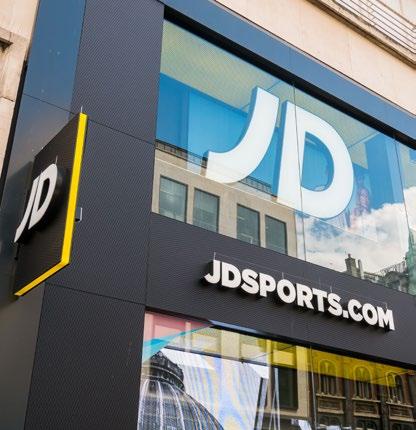
FULL-YEAR RESULTS
2 July: Supreme
FIRST-HALF RESULTS
2 July: Kitwave
TRADING UPDATES
2 July: Sainsbury’s
3 July: JD Sports Fashion
After arch-rival Tesco (TSCO) released forecast-beating quarterly sales earlier this month, with strong likefor-like growth across its UK stores, all eyes are on the next trading update from Sainsbury’s (SBRY) on 2 July to see whether it has managed to maintain its recent momentum.
In April, the supermarket chain said it had enjoyed its strongest-ever year of grocery sales in the 12 months to start of March with record market share gains and volume growth accelerating every quarter thanks to its ‘Food First’ strategy.

The firm also said it was ‘confident of delivering strong profit growth’ in the year ahead driven by volume gains, further growth in Nectar’s contribution and a ‘resilient’ performance from Argos.
According to retail consultants Kantar, in the 12 weeks to the middle of May –which more or less coincides with the firm’s first quarter –
Table:
Sainsbury’s grew its sales by 5.6% in value terms, which was on a par with Tesco and ahead of the overall grocery market which saw a 3.6% increase. The group’s market share rose to 15.1% compared with 14.8% in the same period a year ago, while smaller rival Asda saw its share sink from 13.9% to 12.8% and Morrison’s maintained its 8.6% market share. Clive Black, head of consumer research at house broker Shore Capital, sees Sainsbury’s reporting ‘excellent’ progress in first-quarter sales, with mid-single digit food sales growth – consistent with Kantar’s figures – offset by negative non-food growth, although he doesn’t expect to adjust his earnings forecasts. [IC]

QUARTERLY RESULTS 3 July: Constellation Brands

Analysts remain cautious despite the shares' strong performance this year
Given the mixed updates from consumer-facing companies in recent weeks, with many reporting a decline in sales among lower-income shoppers, there is growing interest in US drinks group Constellation Brands’ (STZ:NYSE) first-quarter trading statement on 3 July.
The firm, which owns several wine and spirits brands but it better known for importing specialist beers such as Corona, Modelo and Pacifico, is seen reporting beer shipments up 7% on last year for the three months to May.
EPS (earnings per share) are seen at $3.46 against $2.26 in the three months to February and $2.91 in the same period a year ago.
However, analysts have been lowering their forecasts and price targets in recent weeks and the team at Morgan Stanley believe the company will miss forecasts due to lower beer volumes and weaker margins, although they expect it to maintain its full-year earnings guidance.
While acknowledging ‘potentially lingering weaker consumer spending on beverages and the beer

segment and difficult upcoming summer comparisons’, and cutting their shipment outlook, the analysts rate the shares a long-term buy.
Constellation Brands shares are up 9% year-todate which is behind the 15% gain for the S&P 500 index but well ahead of many of the firm’s rivals in the global beer sector such as AB Inbev (BUD:NYSE), Heineken (HEIA:AMS) and MolsonCoors (TAP:NYSE). [IC]
A resurgence of input-cost inflation could mean a delay in cutting rates
There was positive economic news to round off last week with the latest UK retail sales figures showing a healthy rebound in May after April’s weather-affected washout.
Sales by volume climbed 2.9% after April’s 1.8% decline, meaning the three months to the end of May saw a 1% increase on the three months to the end of February.
In contrast, the latest UK PMI (purchasing managers’ index) composite reading showed a slowdown in business activity towards the end of the second quarter.
Manufacturing output rose to the strongest degree since April 2022 driven by better order books and improved business confidence,
but service-sector activity slowed as companies paused spending.
The survey also highlighted a jump in input cost inflation in June as severe global shipping constraints led to higher transport costs, which in turn led to producers raising their prices at the sharpest rate in over a year.

This resurgence in cost pressures is something the Bank of England will need to take into account when it considers whether or not to cut rates at its next meeting.
Looking ahead, the Federal Reserve will be watching the latest US core PCE (personal consumption expenditure) figure for May, which is expected to drop to 2.6% from 2.8% in April, as well as the JOLTS labour market survey and ADP employment data, as it considers the timing of rate cuts.
Asia-watchers will want to keep an eye on Chinese PMIs, Japan’s Tankan business survey of manufacturing confidence and South Korean exports, which are seen by some as a useful barometer of global economic health given the country produces a wide range of consumer goods from smart phones and TVs to cars.
Next week’s calendar is fairly light, with the focus on UK house prices and mortgage approvals, with the biggest news by far the outcome of the general election which takes place on 4 July. [IC]

Recent sell-off creates great entry point ahead of tech hardware refresh cycle
Market cap: $97.57 billion
It’s one of the more recognisable names in consumer electronics, millions of us own Dell Technologies (DELL:NYSE) laptops or PCs, yet the Texas-based company is also one of the world’s biggest players in servers, essentially the powerful computers that sit inside datacentres. Estimates suggest that the average data centre has one server per one square metre of floor space. The Digital Realty (DLR:NYSE) owned Citadel Campus, in Lake Tahoe, is one of the world’s largest and most expensive datacentres. It is a 650-megawatt power capacity sprawl that extends across more than 7.2 million square feet. That’s a lot of servers.
Dell shares have had a bad run since latest earnings at the end of May 2024 (first quarter fiscal 2025), falling about 23%, but analysts and Shares believe this has created an excellent entry point ahead of what we believe will be a new server upgrade cycle as organisations demand the best AI kit to power their own technological solutions. Those quarterly results were ahead of forecasts

on both the revenue and earnings lines, but the market’s chief worry was with margins. While recognising the issue, Melius Research analyst Ben Reitzes was more optimistic about the future.
‘While component cost pressures were well known, a negative mix shift within storage, pricing pressure in traditional servers and upside in the lower margin AI server category were the issue — and it lingers this year,’ he wrote. Yet Reitzes remains bullish on Dell shares, as ‘margins should still get better from here’. That could happen, the analyst believes, ‘as AI servers scale toward 15% gross margin,’ relative to below 10% in the fiscal
first quarter, and as ‘higher-margin storage picks up [sequentially] and more profitable services and financing revenue streams pick up’.
Bank of America also sees Dell capitalising on strong demand for AI servers and analyst Wamsi Mohan thinks AI-server margins ultimately will turn higher. ‘We believe that Dell is receiving a premium for its engineering and value add in AI servers despite not being the price leader of the product,’ he observes.
AI-server margins should eventually come to benefit as higher-margin deferred revenue related to services kicks in, he adds. Plus, higher-margin enterprise customers could make up a greater mix of the company’s business.
Over time, margins are expected to improve due to higher deferred revenue from services and a shift from lower-margin Tier Two to higher-margin Enterprise segments. Bank of America projects that a conservative $15 billion in AI server revenue in 2025 could add approximately $0.54 to EPS (earnings per share), with a bull case scenario of $20 billion in revenue potentially contributing $0.69 to EPS.
Consensus EPS estimates are currently pitched at $7.73 for fiscal 2025 (to end Jan) and $9.14 for 2026, according to Stockopedia data. ‘If margins trend higher over time with liquid cooling, there can be incremental upside as well,’ Mohan says.
The rapid emergence of AI, and its knock-on impact to a hardware refresh cycle is clearly an encouraging lever to pull for Dell, but it is not
the only one. Dell’s PC segment also presents noteworthy opportunities, say analysts. Increasingly, they are optimistic about the recovery in PC sales by 2025 due to an aging installed base, the end-of-life refresh for Windows 10, and the availability of AI-installed PCs.
They currently model a 9% unit increase in 2025, although they anticipate a 7% decline in average selling prices.
Dell’s storage business is expected to contribute positively to the company’s margin profile. Analysts foresee quarter-on-quarter margin improvement following a seasonally weak period.
There is potential for growth in storage and networking as AI server attachments increase over the long term, and extra ‘upside could come from a high-end storage refresh driven by the IBM Mainframe cycle’, Bank of America note. In short, Dell is potentially in a 2025 sweet spot where all areas of its business could strengthen in unison.
Ultimately, this leaves Dell exposed to positive revenue and EPS revisions as the months tick by, strong growth in AI servers, upside from PCs, and from a refreshed storage portfolio into 2025. That could well create a sustained and widespread investor rethink of Dell and its stock and put the shares back on track for a return to all-time highs this year of close to $180.
That implies more than 30% share price upside into 2025 yet would still imply a price to earnings multiple of less than 20, assuming no change to earnings estimates. Stockopedia puts the stock on a rolling 12-month PEG (price to earnings growth) multiple of 0.8, right in the growth/value sweet spot. [SF]
The fund has low correlation to traditional assets
Market cap: £154.4 million
It has been a rough couple of years for shareholders in long-duration assets as rising interest rates have sent them to deep NAV (net asset value) discounts.
With central banks signaling the end of the rate-hiking cycle and inflation heading back down, former headwinds are now set to turn into tailwinds.
A great way to play this scenario and take advantage of depressed valuations is via JPMorgan Global Core Real Assets (JARA).
The company provides exposure to over 1,400 quality real assets around the world, providing strong diversification alongside reliable income and growth.
The trust’s goal is to provide a total NAV return of between 7% and 9% a year with 4% to 6% coming from dividends.
The share price trades at a 20% discount to the underlying assets, meaning it has already narrowed from the 27% discount seen at the start of the year. This has been aided by the manager conducting a share buyback programme equivalent to around 4% of the outstanding shares over the last year, adding 1.07p to net asset value.
The trust utilises JP Morgan’s extensive alternative asset platform which manages around $200 billion of assets, primarily for institutional clients.
JARA is a unique vehicle providing access to a cornerstone real assets investment strategy allowing retail investors to benefit from the manager’s global scale and expertise.
Over the year to the end of February, the fund’s
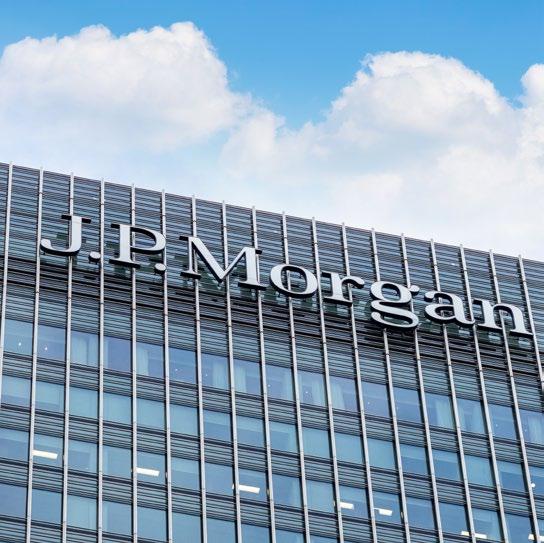
Shares magazine • Source: LSEG
exposure to real estate has declined from 47% to 42%, driven partly by negative performance from the private real estate equity sleeve as well as active rebalancing.
JARA’s transportation allocation has increased to 23% from 22% and the portfolio’s infrastructure allocation has increased to 24% from 21% while other real assets make up the remaining portion of the fund.
The board believes there is further scope to reduce exposure to real estate and is seeking shareholder approval to change the mandate to give the manager greater flexibility. The company is also proposing to change the frequency of the continuation vote to every three years from five years.
Assuming shareholders vote in favour at the upcoming continuation vote at the annual general meeting on 3 September, the next vote would be held in 2027.
Over the last year, NAV total return was -4.4% and shareholder total return was -20.9% due to the widening of the discount to NAV. Underlying asset performance in local currency was a gain of 0.3%, while total dividends were increased by 5% to 4.2p per share. The historic yield is 4.5%. The ongoing charge is 1.22% a year. [MG]

Generations of investors have trusted F&C with their financial future. F&C has repaid that trust with long-term growth*.
Search ‘F&C Investment Trust’ It’s smart to start with F&C® Capital at risk



































This value-focused trust is a savvy great way to profit from renewed interest in UK small caps
Rockwood Strategic (RKW) 267.5p
Gain to date: 42.7%
We highlighted the investment merits of Rockwood Strategic (RKW) at 187.5p in November 2023, arguing the value-focused trust was a way to gain differentiated exposure to a small cap asset class with exciting re-rating scope. We explained how manager Richard Staveley’s tried-and-tested strategy identifies undervalued stocks where the company will benefit from operational, strategic or management changes that can unlock or create value for investors.
Our thesis was that Rockwood’s concentrated portfolio contained ‘deeply undervalued future cashflow potential’ with re-rating catalysts in place. We also highlighted that the trust was benefiting from a number of takeover bids that were boosting its NAV (net asset value).
WE SAID TO BUY?
Staveley’s differentiated approach of taking active stakes in core holdings continues to prove highly effective. Results (19 June) for the year ended 31 March 2024 showed the trust’s NAV total return increased by 5.1% to 206.04p, outperforming the FTSE AIM All Share’s 8.6% decline in a challenging UK small caps market.
Rockwood Strategic (p)
issue shares to grow the trust’s size and enhance liquidity.
SHOULD
DO NOW?
Keep buying Rockwood Strategic as the outlook for UK smaller companies is positive. Falling inflation should pave the way for interest rate cuts, while further NAV-boosting bids for portfolio companies look highly likely.

Since year-end, the NAV has risen by 19.1%, cementing Rockwood’s status as one of the AIC UK Smaller Companies sector’s best long-term performers. The shares closed the financial year at a 1.9% premium to NAV, having begun at a 7.1% discount, which has allowed the board to
Last year, five new investments were purchased for the fund as monies received from four takeovers and share issuance were re-deployed, including Scottish commercial broadcaster STV (STVG), shredding and recycling specialist Restore (RST:AIM) and marine, energy and defence group James Fisher & Sons (FSJ).
In the results announcement, Staveley said he was excited about the ‘underlying business turnaround momentum’ across Rockwood’s portfolio, expected ‘further profit recovery and valuation re-rating in our investments’ and insisted that ‘a number of positive potential catalysts are yet to emerge’. [JC]











Assessing potential investor reactions to a range of different outcomes on 4 July
Barring a polling error of an unprecedented magnitude there will be a change of government after the UK general election on 4 July.
With the Conservative Party at times polling
below 20%, and Reform drawing level in some polls with what has been since its formation the UK’s most successful political party in electoral terms, it is very likely the Labour Party will win a comfortable majority.
The impact of the general election is likely to be most clearly reflected in financial market terms through the performance of the pound against other major currencies and movements in gilt yields, which influence how much it costs the government to borrow money.
If the pound goes up and gilt yields ease, you can assume there has been a favourable outcome. If the opposite happens, then the market will have received some kind of shock from the result.
In UK stock market terms, the FTSE 250, which has a more domestic skew than the FTSE 100, is likely to offer a better reading of what investors think of the election’s implications for UK assets. Sectors like financials, housebuilders and real estate are often the most sensitive to political developments in the UK.
Counter-intuitively, the FTSE 100 may fall in the event of a market-positive result given a stronger pound hits the relative value of its constituents’ dominant overseas earnings.

Tax: Labour has pledged not to increase taxes on ‘working people’ – a deliberately opaque statement. It has been more concrete in saying there will be no increases to income tax, national insurance or corporation tax and pledged to cap the headline rate of corporation tax at the current 25%.
Wealth taxes and increases or extensions in capital gains tax have not been categorically ruled out. An increase in capital gains tax could prompt a wave of selling by investors ahead of its introduction as investors look to crystalise gains at existing rates.
Labour has specifically said it will close the loophole by which performance-related pay in private equity is treated as capital gains. It has also proposed a time-limited windfall tax on oil and gas companies and said it will increase by 1% the stamp duty on purchases of residential property by non-UK residents.
Stock market impact: will mainly fall on real estate and oil and gas sectors although an increase in capital gains tax could prompt broader market weakness.
Pensions: Labour has committed to retaining the triple lock guarantee (meaning the state pension rises in line with CPI inflation, wage inflation or 2.5% - whichever is highest) but not gone as far as the Tories who pledged to introduce a new pensioner personal allowance to ensure no-one would pay tax on their state pension income.
Labour has also said it will review workplace pensions to emphasise consolidation and scale and also try to direct investment into UK plc. Given the sums involved this could be much more significant for the UK stock market than the mooted introduction of a British ISA, for example.
Stock market impact: broad if the allocation of pension funds can be shifted decisively into UK stocks.

Gambling: While there has not been a huge amount of discussion about gambling reform during the campaign, in its manifesto Labour talks about ‘reducing gambling-related harm’. ‘Recognising the evolution of the gambling landscape since 2005, Labour will reform gambling regulation, strengthening protections,’ it concludes.
Tobacco: Tobacco stocks may have received a brief respite as the snap election prevented prime minister Rishi Sunak from bringing forward his legislation to ban young people from ever being able to smoke legally. However, Labour confirms in its manifesto it will follow through with Sunak’s idea.
Defence: Labour says it ‘will conduct a Strategic Defence Review within our first year in government, and we will set out the path to spending 2.5% of GDP on defence’. This compares with the Conservatives who have pledged to get to 2.5% by 2030.
Housebuilding: Noises from the industry have broadly been positive on Labour’s plans which include a mortgage guarantee scheme for firsttime buyers and reform of the planning system, which many housebuilders complain is an obstacle to building more homes.


However, to be fully prepared, investors should think about what will happen if the narrative does not play out exactly as expected.
As the Brexit vote, Donald Trump’s victory in 2016 and even the recent Indian elections show, it would be wise not to make too many hard and fast assumptions.
Read on to discover what different outcomes might mean and the policies which could have the largest market impact.
Strategists at investment bank JP Morgan have already said a Labour government would be a ‘net positive’ for financial markets, predicated on a workable majority being secured. A majority upwards of 50 MPs (meaning 50 more MPs than the rest of the parties in the House of Commons combined) would give investors the political stability they crave after at least eight years of relative turmoil. While it will make a difference in party management terms, it probably won’t make a huge difference if the majority is 50 or 150.
On the other hand, if the Conservatives secure less than three figures in seat terms, as some polls have implied, this may provoke some alarm given a lack of effective opposition and the implications for one of the two major parties in Britain. The Conservatives have typically been perceived as the party of business and therefore market-friendly (even if that reputation has been dented of late by the 2022 mini-Budget and the handling of Brexit). The prospect of a more radical, populist party supplanting or potentially merging with
a depleted Tory contingent is one investors may fear.
If Labour wins a majority of 50 or less there is a greater risk of MPs with more radical agendas having some leverage and a Labour government introducing policies which bring in more dramatic reforms in areas like housing, environmental regulations and tax. This could have implications for sectors like energy, housebuilding, real estate and financials. Such a result would be taken as a mild negative by markets.
A more messy outcome where Labour falls short of a majority but is able to form a government with the support of minor parties, most likely the Liberal Democrats but potentially the Scottish National Party, would undoubtedly be taken negatively by investors. Definitively in the short term, as the potential for instability is digested and effective government is more difficult, and potentially in the longer term too.
If Labour did a deal with the SNP it could raise the distinct possibility of a second referendum on Scottish independence being a condition of its support. This might prolong the constitutional instability which has arguably blighted the UK’s standing among global investors for the best part of a decade. The Liberal Democrats unveiled a tax on share buybacks in its manifesto and could push for this to be actioned in the event the party forms a coalition with Labour.

Following Patria Investments’ acquisition of abrdn’s Private Equity Europe business, APEO will now be called the Patria Private Equity Trust (PPET).
Whilst the name has changed, the Trust’s management, strategy, and European focus will all remain the same – as will the investment objective. The Trust remains committed to investing for consistent, long-term returns and providing access to private equity for all.
We’re excited for the next stage of our journey, and what Patria’s ambitious involvement will bring us: new resources, new opportunities, and a renewed drive to deliver even more for our investors.
Past performance is not a guide to future results. The value of investments and the income from them can fall and investors may get back less than the amount invested.
Find out more about PPET at patriaprivateequitytrust.com

By Ian Conway Deputy Editor
If, like many people, you have moved jobs over the years and accumulated two or more occupational pensions, now is a good time to think about bringing them all under one roof.
As well as allowing you to work out how much is in your pension pots and where they are invested, by consolidating them into a single pot you can manage them more easily.
In this article we’ll show you how to go about this process and what products are available to do the ‘heavy lifting’ for you and make the journey stress-free.
Since the introduction of automatic enrolment in 2012 more people have been paying into company pension schemes, which is obviously a good thing, but it does mean anyone who has changed jobs more than once since then – which probably covers the majority of people currently in work – is likely to have more than one pension pot.
As well as being timeconsuming keeping tabs on these different pots, if you lose track of one of your pots you could miss out on money which you have been relying on to part-fund your retirement.
According to the pensions industry, the amount of money in ‘lost’ pensions is almost £27 billion, which is quite shocking, but there is an official online pension tracing service to help you if you think you have a lost pension.
everything into that pot and be done with it.
However, you have to remember past performance is no guide to what will happen in the future so you should take a step back and weigh up each investment on its own merits rather than rushing into a decision.
You may find your pensions are invested in lots of different assets, not just shares but also bonds, tracker funds and funds of funds, so making a list of what is in each one should be your starting point.
You may also find your investments are spread far and wide geographically, which could be a good thing in terms of diversification but could be a bad thing if your money has been invested in poorlyperforming markets.
Taking the time to understand how and where your pensions are invested will give you a fuller picture of your finances.
Then there is the question of costs – having three or four small pots rather than one large one means you are probably paying more than you need to in management fees as most firms charge less the more money you have in your pension.

Although the government promised to set up a ‘pensions dashboard’ to help those with multiple pensions manage them all in one place, this has yet to become a reality, so at some point you will need to decide whether to keep all your pension pots separate or bring them all together in one place.
Before you do that, you need to know how much they are worth, whether they are being managed well, how much they are costing you in fees and whether there are any special clauses attached. It is likely one of your pots has performed better than the others, and you may be tempted to move
Having all your money in one place also makes it easy if you decide you want to change the amount of risk you are willing to take.
Most people become more risk-averse as they approach retirement, as they don’t want to risk their capital, so they begin shifting their investments towards less speculative and more secure assets, in many cases selling high-flying stocks and buying bonds with a steady income instead.
Finally, having one larger pot rather than three or four smaller ones will make it far easier for you to manage and eventually to draw your pension when the time comes.
We touched on the issue of costs, and the table shows the difference consolidating your various pots into one place can make in terms of reducing the ‘drag’ from annual management fees.
Say you had four pots each worth £15,000 and you paid an average of 0.75% in management fees each year.

There are some ready-made services on the market to help you consolidate your pensions in one place, and some – like the AJ Bell Ready-Made Pension – even offer to track down lost pensions for you.
The service also offers the ability to put your newly-consolidated pension into a range of four funds managed in-house with varying degrees of risk according to how aggressive you want to be in growing your pot, all with the same 0.45% management fee.
All your future pension contributions will be collected and invested automatically in your chosen fund, with the freedom to switch funds at any time.
For now, this service is only available to customers who are new to AJ Bell not existing customers.
Assuming each pot earned a gross return of 5% per year, after five years they would be worth £17,559 each or £70,236 in total and you would have paid £2,448 in fees.
However, if you had consolidated all four pots into one with an average annual management fee of 0.5%, after five years your pension would be worth £71,125 and you would have paid £1,640 in fees.
The difference is even more stark if you leave it 10 years or 20 years to consolidate your pots, as the table shows.
Similarly, a higher rate of return would mean your four smaller pots paying more fees in total than a single larger pot.
There are some circumstances where consolidating your pensions may not be a good idea, for example if you have a defined benefit or ‘final salary’ pension.
These provide a guaranteed income for life, which could be worth a great deal more than a defined contribution pension, where you just get a finite amount of money, so you need to think carefully before giving one up.
If you have a defined benefit pension worth £30,000 or more, you must seek regulated financial advice before transferring it otherwise your chosen pension provider will not be able to help you consolidate it with your other pots. Also, some pension schemes offer a guaranteed annuity rate, which allows you to buy an annuity
offering a much higher income than you would otherwise get from a defined contribution scheme, so you need to check the fine print to see if any of your pensions contain such a clause.
It would also typically not make sense to move funds out of a workplace scheme where an employer was actively making contributions.
DISCLAIMER: Financial services firm AJ Bell referenced in this article owns Shares magazine. The author (Ian Conway) and editor (Tom Sieber) own shares in AJ Bell.
One option if you’re looking to consolidate several pensions is to use a SIPP (self-invested personal pension) as the vehicle. This typically brings a far greater array of investment options than other types of pension. Your next step is to research the investments made available by the SIPP provider in order to build a portfolio resilient enough to grow your wealth and protect your savings from unexpected shocks. If you don’t have the time to follow individual companies you could lighten your research load by leaving the stock picking to the professionals.
So-called ‘one-stopshop’ funds provide you with everything you need in one product and tend to be multi-asset, which means they own shares and bonds, and often commodities or property. Examples include F&C Investment Trust (FCIT), the ultra-diversified long-term capital growth and income fund invested in more than 400 companies spanning 35 countries, which has increased its dividend for 53 consecutive years. Another core equity
holding that delivers a real long-term return through capital growth and a rising dividend is the diversified Alliance Trust (ATST). Actively managed funds with a UK equity focus that could act as core holdings include the likes of BlackRock UK Special Situations (B3V1C06), diversified across 69 individual holdings, or the multi-cap Man GLG Undervalued Assets (BFH3NC9), which benefits from the manager’s disciplined valuation approach. Once you’re up and running with a carefully constructed core of funds, you can begin to select a few individual stocks and more eclectic funds as satellite holdings to keep things interesting.
You could speedily construct a diversified portfolio through ETFs (exchange-traded funds), which trade on exchanges, generally tracking a specific index, investment style or theme and levy lower charges than funds and investment trusts. One example is the Amundi Prime Global ETF (PRIW), which tracks the performance of the Solactive Developed Markets Large- and MidCap Dollar Index but is priced in sterling and has a competitive annual fee of just 0.05%. [JC]

MAGAZINE HELPS YOU TO:

• Learn how the markets work
• Discover new investment opportunities
• Monitor stocks with watchlists
• Explore sectors and themes
• Spot interesting funds and investment trusts
• Build and manage portfolios
Many tech stocks are trading at all-time highs but fund managers think the sector is still hugely attractive
That chip designer Nvidia (NVDA:NASDAQ) is now vying for the position of the world’s largest company is arguably less startling than the ‘blink and you’ve missed it’ manner in which it has happened. It took Apple (AAPL:NASDAQ) five years to bridge the $1 trillion to $3 trillion market cap gap, Microsoft (MSFT:NASDAQ) about the same. Nvidia did it in barely a year.
At the beginning of 2023 Nvidia was worth just $360 billion, and it was recently valued at $3.34 trillion, vaulting the other members of the $3 trillion club.
Such a rapid rise in market valuation is bound to set investor tongues wagging and talk of an AI (artificial intelligence) bubble is being increasingly pondered by decision-makers at top funds just as it is by retail investors over a pint in the pub.
‘I’ve seen a lot of technology hype in my 20-plus years’, says Mike Seidenberg, who runs the Allianz Technology Trust (ATT), a hugely popular choice among UK retail investors. He believes that AI is not hype, but a ‘secular’ theme capable of



creating ‘budgetary dollars for the beneficiaries’, even if revenue and profits is likely to ‘zig and zag’ depending on the varied pace of implementation cycles.
Jean Boivin, head of the BlackRock Investment Institute, agrees. ‘The AI rally is supported by earnings and has more room to run, in our view,’ he says. ‘We don’t see an AI bubble.’

While Seidenberg accepts that there may be a ‘little bit of froth in the market’, the power of the solutions today suggest we are just at the beginning of a secular trend, he believes, highlighting AI-powered products from the likes of workflow management platform ServiceNow (NOW:NYSE) and Microsoft’s Copilot.
‘We try to focus on large market opportunities rather than exciting niche applications,’ says Ben Rogoff, manager of the other main closedended technology fund in the UK – Polar Capital Technology Trust (PCT). ‘Our philosophy is that returns within tech are generally generated by a few companies, so it’s critical for us to participate in




their success.’
This hints at a crucial point made by Seidenberg, who often reminds his team that their job is not to identify the best technologies, but to focus on the opportunities best able to monetise technology developments for the benefit of shareholders, be it in AI, could computing, chip design, cybersecurity or whatever.
There are three reasons why firms buy tech, according to the Allianz fund manager – grow revenues, save costs, and improve customer service. ‘I remind myself of that very often,’ says Seidenberg. He breaks it down into ‘enablers’, such the software firm mentioned previously, and ‘picks and shovels’, or facilitators of AI.
What does AI mean for a datacentre? Seidenberg asks rhetorically. This is an area where Oracle (ORCL:NASDAQ) has been attracting a lot of attention through its cloud infrastructure arm this year. ‘These are the kinds of questions we think about when we find these big secular themes,’ he says.
In theory, new generative AI features will let businesses craft sales pitches using Salesforce
Chart: Shares magazine • Source: Polar Capital
(CRM:NYSE), summarise your employees’ skills in Workday (WDAY:NASDAQ), create images from prompts in Adobe’s (ADBE:NASDAQ) Photoshop, and automatically draft responses to IT requests in ServiceNow.
We might not be there yet, but these are the types of companies, with clear routes to generating new revenues and cash flows, that investors should be thinking about.
Tech companies have pricing power, and if AI is as productive as Polar Capital Tech’s Rogoff thinks it will be, there’s going to be a lot of pricing capture in companies that can deliver productivity, perhaps at the cost of other sectors.
‘There are going to be winners and losers and we have clearly seen AI companies taking budgetary dollars from other sectors,’ says Seidenberg. Rogoff agrees. ‘If you’ve invested in advertising businesses or retailers alongside tech over the past 20 years, you have been caught off guard by e-commerce and advertising companies, such as Alphabet’s (GOOG:NASDAQ) Google or Amazon (AMZN:NASDAQ).’ IS TECH
2024
Others (5.8%)
(2.4%)
Others (5.8%) Semiconductors (2.4%) Retail (4.4%)
(4.9%)
(5.3%)
(9.9%)
(10.8%)
Chart: Shares magazine • Source: Statista
Chart: Shares magazine • Source: Statista
Chart: Shares magazine • Source: Statista
expensive (and they frequently are relative to other parts of the market) and that makes many nervous about investing in the sector. ‘Ultimately, if a business doesn’t create superior cash flows and scale, it’s not a very interesting business to us,’ says Allianz’s Seidenberg.
Sustainably above average growth is what the technology sector typically provides and, as Seidenberg says, when you look at many no-tech businesses and their limited growth prospects versus valuations, technology remains attractive from an investment point of view.
‘Campbell Soup (CPB:NYSE) might be a great product but the company isn’t growing very fast,’ he says. Stockopedia data shows Campbell Soup has a compound average growth rate of 7.2% in recent years, and a forward PE (price to earnings) multiple of 14. Compare that to Microsoft, which trades on a PE of 33 but has generated 13.9% CAGR over the same six-year period, while producing vastly superior operating margins, and returns on capital and equity.
Using forecast data from Koyfin, Campbell Soup’s PE will have reduced to 12.9 based on full year 2026 earnings projections, whereas Microsoft’s will have fallen to 28.
Put another way, the relative PEG ratios (price to earnings growth), a metric designed to reflect
valuation versus growth rates where the nearer to one there better, stand at 3.4 and 3.0 for Campbell Soup and Microsoft respectively, and readers might ask themselves which they would rather invest in today.
This is not meant as an analysis of either business or stock, it’s merely an illustration, but if it encourages you to think about your perceptions of valuation, then it will have been useful.
‘What it boils down to is, what does the margin structure look like at scale, what do we think the long-term growth rate is, and what are the barriers to entry,’ says Seidenberg. Answering these seemingly simply yet ultimately complex questions is why many retail investors may feel that having help from a proven expert fund manager is the best way to gain exposure to this fascinating and increasingly crucial, if sometimes volatile, investment space.
The author of this article (Steven Frazer) has a personal interest in Allianz Technology Trust and Polar Capital Technology Trust.

By Steven Frazer News Editor

Starting as early as possible can pay off in the long run
It can seem daunting to know where to start when making a first investment which may deter some people from starting at all. This would be a mistake because the sooner a start is made, the longer an investment is allowed to mature and provide capital gains and dividends.
Waiting just a few years can reduce the potential saving pot over the long term. For example, assuming an investment of £100 a month earns 7% a year, waiting just four years to start reduces the investment pot by around 25%, over 40 years.
This is equivalent to a difference of £65,000 over that period. This article provides some pointers on how to think about building a portfolio for the first time.
Apart from starting as early as possible, the next consideration is building a diversified portfolio. Diversification is an important principle in finance and sometimes referred to as the only ‘free lunch’ available to investors.
Greater diversification reduces volatility (how much the portfolio’s value moves up and down) and smooths out investment returns. A good rule of thumb is to aim for populating a portfolio with at least 25 individual stocks.
Using the same £100 a month investment example, this equates to a £1,200 investment over one year which implies investing £48 in each investment.
It is challenging to invest small amounts because
the costs can render it uneconomic. Trading costs alone can be as much as £10 while the dealing spread,(difference between buying and selling price) also needs to be considered. It is also worth remembering that stamp duty is payable at a rate of 0.5% on purchases of UK shares.
On top of the cost side of the equation, conducting research on 25 different investments can be time consuming. Fortunately, there are simpler and cheaper solutions for achieving diversification when starting out.
Ready-made diversification and exposure to leading market indices can be found via actively managed and passive funds, investment trusts and ETFs (exchange traded funds). These investments can form the bedrock of a portfolio with individual shares added later to provide even greater diversity and growth and income potential.
Novice investors with neither the time nor inclination to research individual stocks might prefer to leave the decisions to the experts, and this is where ‘one stop shop’ funds can have a role to play.
These products are designed to give investors everything they need under one roof and tend to be multi-asset, which means they own shares and bonds, and can sometimes give access to commodities or property, while avoiding anything too exotic that could suddenly blow a hole in performance.
If you do not have the time or interest to do your own portfolio planning, ready-made portfolios can be a decent alternative. AJ Bell has four ‘starter portfolios’ to suit cautious, balanced, adventurous and income-focused investors. Note these are currently only available to new rather than existing AJ Bell customers. Judging where you sit across the range of options will largely depend on how long you are planning to invest for but also on your temperament.
This applies across the board with investing. You will need to make a minimum initial investment of £1,000 and you’ll kick off with a group of five to nine products from AJ Bell’s ‘Favourite funds’ list which fit your chosen category.
These starter portfolios are updated by AJ Bell and you have the power to update your own portfolio too. This makes them a useful starting point which you can build on as you become more confident in your investing. You’ll pay £1.50 each time you buy or sell a fund, and a 0.25% custody charge (tiered down to zero) per year for holding the funds.
The funds tend to be globally focused which provides access to greater diversification and enhanced growth opportunities relative to those available in the UK stock market.
F&C Investment Trust (FCIT) is one of the oldest investment trusts and has increased its dividend for 53 successive years. It provides long-term capital growth and income from an ultra-diversified fund invested in over 400 companies across 35 countries. Capital preservation trusts such as Ruffer (RICA) and Personal Assets (PNL) have some attractions as
one stop shops. They are invested across different asset classes and aim to provide capital protection and long-term capital growth.
A no hassle, diversified, cost-efficient way of building a portfolio is to use exchange-traded funds or ETFs and index fund trackers. An ETF is a pooled investment vehicle which, like a fund, offers investors a proportionate share in a pool of stocks, bonds, and other assets.
Unlike a fund whose shares are priced daily based on the value of its assets, an ETF can be bought or sold throughout the day on a stock exchange at a market-determined price. This is the main difference between ETFs and index trackers which price once per day.
The hardest challenge with building a portfolio through ETFs is determining an appropriate amount to put into each asset class, from riskier assets like shares to lower risk assets like bonds. Every investor should try to build a portfolio which suits their individual risk appetite. It is better to aim for a balanced portfolio initially and once more confidence and experience is gained, weightings can be adjusted to suit changing risk appetites or developing areas of expertise.
Age is also a factor to consider. Someone in their 20s, 30s or 40s may prefer to have a lower weighting to bonds, as they have time on their side to ride the ups and downs of the stock market.
Stocks have historically produced better returns than bonds but with more variability. Bond returns have been lower but more stable than stocks. A balanced portfolio would aim for 60% in stocks and 40% in bonds. It is worth pointing out this once popular approach has come under fire in recent years as rising inflation has had a big negative impact on bond returns.
A balanced portfolio would aim for 60% in stocks and 40% in bonds”
That does not mean the relative security of a fixed bond income security has lost any of its appeal. In this
context, it is worth pointing out that while prices move around during the life of a bond, on maturity investors should expect to receive their capital back.
Below we look at some ETF options for portfolio construction, taking in assets like stocks, bonds, commodities, property and infrastructure.
Global stock ETFs tend to track either the MSCI World index or the FTSE World index, index creations of the two largest index providers, MSCI (MSCI:NYSE) and the London Stock Exchange (LSEG), respectively.
The Vanguard FTSE-All World ETF (VWRP) tracks the latter and has a total expense ratio of 0.22% a year. The FTSE World index tracks stocks from developed and emerging countries worldwide.
The ETF has almost £10 billion in assets and the manager aims to replicate performance of the index by buying the most relevant index constituents.
The Bloomberg Global Aggregate Bond index is comprised of over 15,000 investment grade bonds issued in emerging and developed markets worldwide and used by fund managers as a broad-based benchmark for global bonds.
An efficient way to track the index is via the iShares Core Global Aggregate Bond ETF USD Hedged (AGGU). The ETF has a total expense ratio of 0.1% a year, making it one of the cheapest ways to track global bonds across all maturities.
and should benefit from lower interest rates.
The iShares UK Property ETF (IUKP) tracks the FTSE EPRA/NAREIT United Kingdom index which itself tracks UK listed real estate companies and trusts.
The £623 million fund is invested across 41 holdings and has a total expense ratio of 0.4% a year.

In the infrastructure space investors could consider the iShares Global Infrastructure ETF (INFR) which tracks the FTSE Global Core Infrastructure index, comprised of the largest global infrastructure stocks.
The £1.11 billion fund has 257 holdings and an ongoing charge of 0.65% a year with the manager fully replicating the underlying index. The fund pays out dividends quarterly and has a trailing dividend yield of 2.48%.
Investors could consider adding some extra spice and diversity by investing in property and infrastructure ETFs. These asset classes provide some inflation protection along with stable, predictable income.
With central banks leaning towards easing tight monetary policies as inflation continues to ease, these assets are very interest rate sensitive
DISCLAIMER: Financial services firm AJ Bell referenced in this article owns Shares magazine. The author (Martin Gamble) and editor (Tom Sieber) own shares in AJ Bell.

By Martin Gamble Education Editor

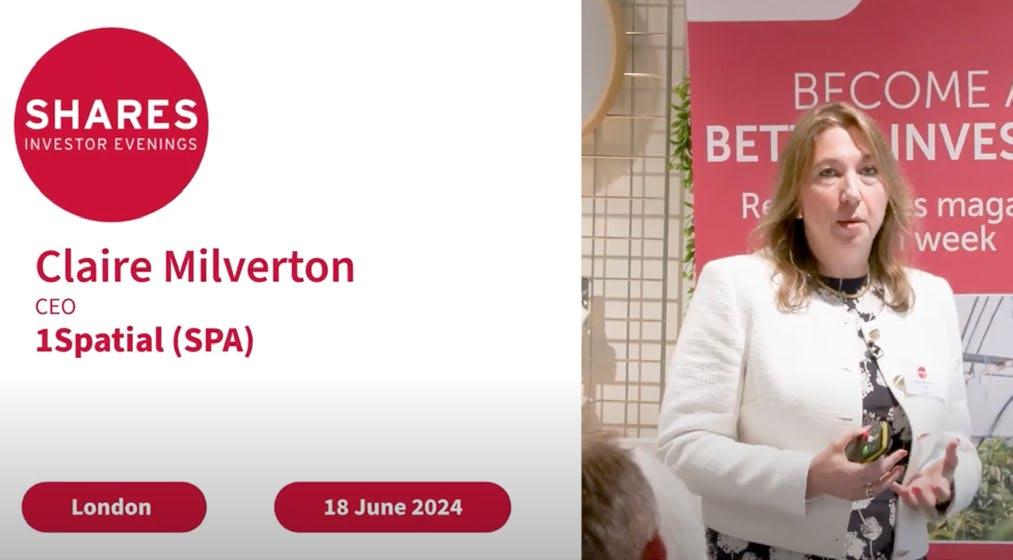

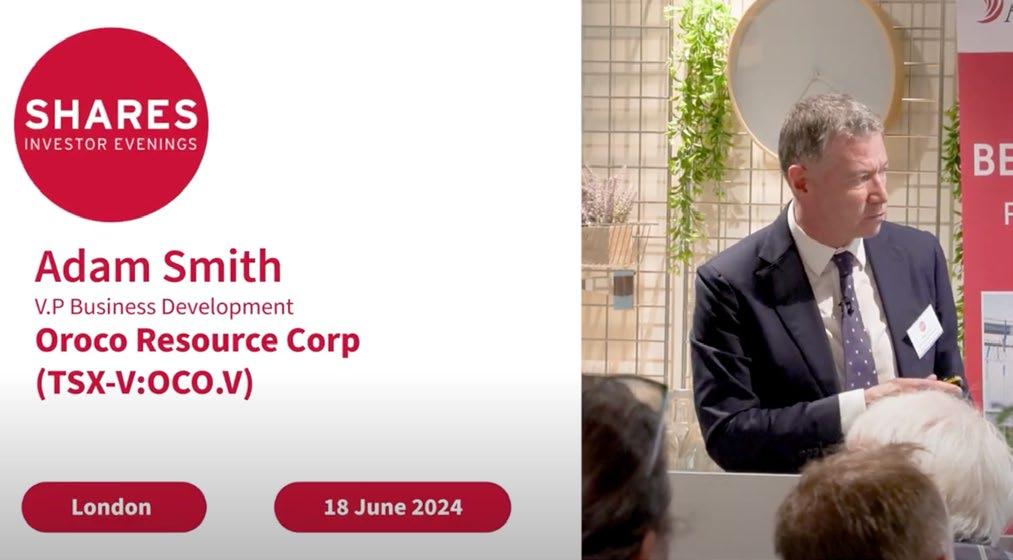
Claire Milverton, CEO
1Spatial (LON:SPA) is a global leader in providing Location Master Data Management (LMDM) software and solutions, primarily to the Government, Utilities and Transport sectors.
Shaun Bunn, Managing Director
Empire Metals (LON:EEE) is an exploration and resource development company focused on the Pitfield Project in Western Australia, a globally significant titanium project contained within a giant, sediment-hosted, hydrothermal mineral system.
Oroco Resource Corp (TSX-V:OCO.V)
Adam Smith, V.P Business Development
Oroco’s Santo Tomas copper deposit stands out as one of a very few independently owned copper assets with an ability to be put into production to meet future demand for copper.

The market will be watchful for policy changes which can revive the country’s economic fortunes
For all of its current challenges, China’s economy is still the second largest in the world, trailing that of only America. According to data from the International Monetary Fund, Chinese GDP had from $1.2 trillion in 2000 to almost $18 trillion in 2023 (and thus as big as Germany, Japan, India, the UK and Brazil combined). That is a compound annual growth rate of 12.4%.
Yet for all of this phenomenal progress, the Chinese stock market has offered much less joy to shareholders and investors. The economy may have grown nearly 14fold since the end of the last millennium, but the Shanghai Composite index is up by just 120% – a compound annual return on capital of just 3.5%, miles below GDP growth.
markets or individual stocks is a likely road to disappointment, as the two do not follow as closely as the casual observer would expect. The second is that financial bubbles really do serious damage. China has had two stock market boom-and-bust cycles since 2000 and it has a third one on its hands now, this time in real estate.

There are three pertinent points here. The first is that using macroeconomics to pick stock
China’s stock market has made almost no ground at all since 2007

Source: LSEG Datastream data
The final one, therefore, is that the quality of the growth matters more than the quantity. China has switched its focus from domestic construction and infrastructure to exports and now to domestic consumption in its quest for growth, but an increased reliance upon debt, and property speculation, meant the quality of growth has deteriorated (and the quantum has begun to suffer as a result). This third point in particular takes us to the next major meeting of the Communist Party’s central committee, or plenum, which is due in July. What emerges from this may help to set the tone for the Chinese economy (and perhaps its financial markets) for some time to come.
China is finding it harder and harder to generate robust economic growth, and not just because of the law of large numbers. In dollar terms, the economy more or less flatlined in 2023 (thanks the greenback’s strength against the renminbi) and grew by 5.3% in local currency, and that came after a modest 3% advance (in local terms), as China staggered out of the pandemic and lockdowns and walked straight into a spectacular real estate bust.
This why so many China-watchers are looking toward the third plenum political cycle. There are usually seven plenums during the five-year life of each 370-strong Central Committee and the third

China’s economy is expected to grow at around 5% a year

one is usually seen as a platform for reform and the formulation of economy policy.
Research from the South China Morning Post flags how the third plenums of 1978, 1993 and 2013 in particular, under the leadership of Deng Xiaoping, Jiang Zemin and current leader Xi Jinping, all laid out major reform programmes designed to boost growth. Given China’s current struggles, expectations are gathering that something big is coming, especially after the postponement of this third plenum last autumn.
The financial markets seem pretty convinced that China has a growth problem, thanks to the real estate bust, build-up of unproductive debt and growing geopolitical pressure that means the West is busily erecting trade barriers to keep out cheap Chinese goods, or obstruct their development, where it can. This may be why its currency keeps sliding lower – markets are expecting either an interest rate cut or an outright adjustment of the value of the renminbi (in effect a devaluation), which is trading near levels last seen in 2008, in the view that it cannot manage interest rates, a quasipegged currency and facilitate free capital flows all at the same time.
China’s currency continues to slide
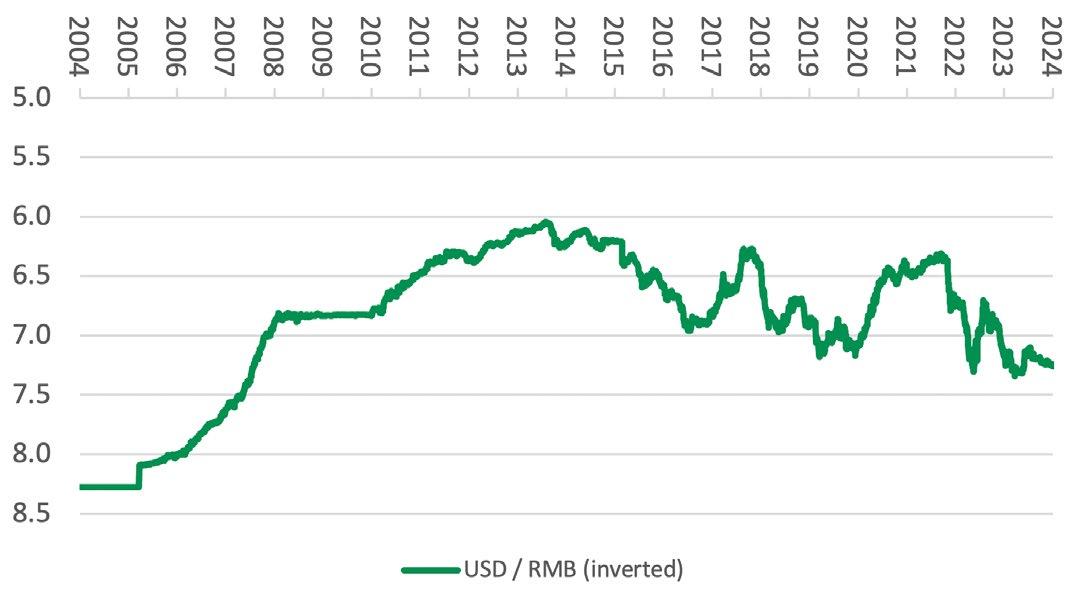
devaluation would not help in this economic and geopolitical aim and nor would it really boost the economy much either, since China already runs a big trade surplus, and it is facing ever-greater barriers in the West to its exports anyway. If China is having to move away from infrastructure and property development, and cannot use exports as an economic lever, then that really leaves domestic consumption and perhaps that is where the plenum will focus its attentions, especially as growth in retail sales (and thus demand) is still running below growth in industrial production (and therefore supply).
China is finding it harder and harder to generate robust economic growth, and not just because of the law of large numbers”
Whether this can benefit investors in Chinese equities, directly (or more likely through passive trackers) or overseas companies that may benefit from increased Chinese consumption, is harder to divine. The iShares China Index ETD is one-third weighted to consumer discretionary names, for example, but history suggests that any policies that come from the plenum will be run to suit the Communist Party and its political and economic agendas, and not for the benefit of equity markets and overseas shareholders, something that investors will need to factor into any risk and valuation considerations.
China does not permit free capital flows anyway but if Beijing wishes to extract itself from the dollar’s orbit, then it may have to entertain this notion at some stage. Equally, permitting a

By Russ Mould AJ Bell Investment Director

As JLEN Environmental Assets Group (“JLEN”) celebrates its 10-year anniversary in 2024, the investment case for environmental infrastructure remains as strong as ever.
Demand for infrastructure solutions which support society’s critical needs, whilst transitioning our economy to a more sustainable, environmentally friendly one, has continued to accelerate - creating a global megatrend rich with innovation and investment opportunity.
JLEN has long been at the forefront of sustainable infrastructure, first launching in 2014 with just a handful of assets encompassing wind, solar, waste and wastewater management sites. At the time, sustainability considerations had not yet been adopted into mainstream public consciousness, but the Company recognised the nascent potential within the sector.
The Board and the Investment Manager believed then, as they believe now, that a diversified investment approach would provide its investors with a variety of benefits. It offers a wider net to capture the best opportunities, coupled with a lower concentration of risk as the portfolio is not dependent on the prospects of one single market, technology type or set of weather conditions. This approach has enabled JLEN to deliver attractive returns for its shareholders. Since the Company launched a decade ago it has grown to become a FTSE 250 fund, increased its dividend year on year and delivered an annualised NAV total return of 8.0%.
Today, JLEN’s portfolio has evolved into a varied collection of 42 assets across 10 technology sectors – with the potential to expand this even further as new opportunities emerge. There is strong political and social momentum underpinning efforts to reach net zero globally, supporting the overall investment case for environmental infrastructure.
When JLEN first listed back in 2014, the Board and the Investment Manager recognised the compelling opportunity within environmental infrastructure. Since then, the landscape has continued to evolve as efforts to decarbonise move beyond electricity

generation and into other sectors of the economy such as heating, transport and agriculture. JLEN has successfully navigated these changes and adapted its portfolio to seize new opportunities and manage new risks.
The Investment Manager has identified three areas of interest which are shaping the future of this market, for the benefit of investors and society alike.
The UK is still at a highly nascent stage in its hydrogen adoption journey but other countries, further along in this process, can offer valuable insights into how the technology could unfold here. For example, the German government has already indicated that hydrogen is their preferred sustainable fuel of choice for road-based heavy freight over the long term with incentives to stimulate this already underway. Gas suppliers are also interested in the potential for blending green hydrogen into the natural gas supply which, if effective, would create a major source of demand across the gas network. JLEN has an existing position in a development stage opportunity in Germany through an investment in the developer HH2E. Germany has a favourable outlook for green hydrogen, with the National Hydrogen Strategy aiming for 10GW of electrolyser capacity by 20301 and legislative and regulatory initiatives in train that should support the investment case for

greenfield plants, such as a green gas quota
The global decarbonisation agenda provides a favourable market context for the low-carbon hydrogen industry to flourish, with hydrogen identified as a likely solution for some parts of the economy that will otherwise find it hard to decarbonise.
Biomethane is indistinguishable as a fuel with natural gas but derived from renewable sources rather than fossil reserves. It provides renewable heat for sectors that otherwise find heating difficult or impossible to decarbonise. It can also be used as a sustainable fuel in sectors such as heavy goods vehicles. Capacity is going in the right direction, with a recent DEFRA announcement stating that mandatory food waste collection – a feedstock for biomethane production facilitieswill be implemented across England and Wales2, creating an advantageous opportunity for investors in facilities that process these materials. The UK government also recently published its Biomass Strategy which recognised that biomethane can directly replace natural gas across a range of uses and has an important part to play in protecting the energy security of the UK overall.
JLEN already owns several Anaerobic Digestion plants that produce biomethane from a range of feedstocks including food waste and has done for several years. In that time, the Company has seen interest in the technology increase from a variety of sources - investors, commodity traders, larger utilities and government included - regarding the applications for biomethane. This interest makes it more likely that there will be ongoing demand for biomethane in the UK’s energy mix and that existing assets such as JLEN’s will continue to produce biomethane profitably even after their initial subsidies expire.
Whilst solar and wind energy has become established in recent years, the Company still believes this sector has great potential in both development and construction stage assets. The market is extremely well-provided for as the renewable lynchpin for the UK and Europe with a great deal of scope for further expansion in order to meet mandated generation targets. The UK government continues to offer support for both onshore and offshore wind projects through the ‘Contracts for Difference’ subsidy mechanism whilst targets for solar capacity remain stretching – a fivefold increase of current production is aimed for by 20353.
JLEN owns a number of wind farms and solar parks as well as ‘baseload’ renewable generators such as biomass and energy-from-waste facilities that do not depend on the wind blowing or the sun shining. It also sees a clear opportunity in the surrounding ecosystem required to ensure intermittent generators such as wind and solar assets can act as mainstays of a low-carbon electricity system without risking security of supply – that is, storing any excess energy generated on high wind/sun days and helping to smooth out supply on low generation days.
JLEN owns four grid-scale battery projects at various stages of development. The revenue for such assets can be variable but they have a role to play in a diversified portfolio and the overall outlook for battery systems and other forms of flexible generation remains positive. The national grid has experienced a degree of pressure to get new battery assets connected, and the Company expects to see more government attention and investment directed towards easing this issue over the coming years.
2 www.mrw.co.uk/news/defra-confirms-simpler-recycling-timetable-and-collections-restriction-09-05-2024/
3 bbc.co.uk. 3 May 2024
This article has been approved by Foresight Group LLP (“Foresight”) as a financial promotion for the purpose of Section 21 of the Financial Services and Markets Act 2000 (“FSMA”). Foresight Group LLP is authorised and regulated by the Financial Conduct Authority (“FCA”), under firm reference number 198020. Foresight’s registered office is The Shard, 32 London Bridge Street, London, SE1 9SG. This article is intended for information purposes only and does not create any legally binding obligations on the part of Foresight. Without limitation, this article does not constitute an offer, an invitation to offer or a recommendation to engage in any investment activity. If you are in any doubt about the content of this article and/or what action you should take, you should seek advice from an independent financial adviser authorised under FSMA who specialises in advising on opportunities of this type. The product described in this article is not suitable for all investors and puts investors’ capital at risk. The value of an investment, and any income from it, can fall as well as rise. Investors may not get back the full amount they invest. Past performance is not a reliable indicator of future performance. Foresight does not provide financial, legal, investment or tax advice. Personal opinions may change and should not be seen as advice or a recommendation. Investors must read the relevant Prospectus and Key Information Document before making an investment decision.

Looking at the names with the largest weightings in the MSCI India index

Despite some recent volatility around election results India’s stock market remains the big success story in emerging markets over recent years but which stocks have really driven these returns? The MSCI India index has achieved an annualised total return of 13.9% as at the end of April 2024, nearly double that of the broader emerging markets index.
In common with most less mature equity markets, the India is dominated by some really big companies, several of which have a conglomerate structure with operations across a range of industries. The top 10 names by weighting in the index account for 36% of the total.
Top of the list is Reliance Industries (RELIANCE:NSE). A classic conglomerate business based in Mumbai its business interests span energy, petrochemicals, natural gas, retail, entertainment, telecommunications, mass media, and textiles. As such it is tied to several aspects of India’s economic transition and growth.
Banking giant ICICI Bank (ICICIBANK:NSE) serves both commercial and retail customers. Unlike Western counterparts it has grown rapidly in recent years as it benefits from more and more individuals
making use of financial services and products in a country where more than a hundred million people remain unbanked.
Bangalore-headquartered Infosys (INFY:NSE) is a multinational information technology company which provides business consulting, information technology and outsourcing services. In April the company reported the lowest growth in its 43-year history.

Sponsored by Templeton Emerging Markets Investment Trust
Three things the Templeton Emerging Markets Investment Trust team are mulling over right now
1.
India: Prime minister Narendra Modi’s Bharatiya Janata Party (BJP) won the largest number of seats in the Indian election, albeit with a smaller number compared to the 2019 vote. Investors are looking to July’s budget for signals on the new government’s priorities. Recent data indicate an improving fiscal position, with scope for a reduction in the fiscal year 2025 budget deficit from the February interim budget forecast of 5.1%. Higher dividend receipts from the central bank and a lower fiscal year 2024 budget give Modi some optionality in deciding expenditure priorities.
2.
China’s initial public offering (IPO) pipeline opens: Following a prolonged pause in Chinese IPOs on international exchanges outside Hong Kong, companies are once again preparing to list. This follows the successful listing of a Chinese luxury electrical vehicle manufacturer in the United States during the first quarter. It is likely that one of the world’s largest fast-fashion apparel companies will list its shares, potentially on the London Stock Exchange, in the coming months.
3.
Higher for longer: A number of US Federal Reserve (Fed) regional presidents have spoken in favor of keeping interest rates on hold at elevated levels for an extended period of time. Higher-for-longer US interest rates imply US dollar strength is also likely to be continue. This has negative implications for emerging market assets. Historically, a stronger US dollar has coincided with outflows of portfolio capital from the asset class.



The freeze on income tax thresholds is dragging millions more people into higher rates of tax, as their wages rise but the tax thresholds don’t increase alongside them.
The OBR estimates that by 2028-29 the deep freeze on tax thresholds will see almost four million extra taxpayers, 2.7 million more moved to the higher rate of income tax, and another 600,000 paying the additional rate.
As a result, millions of people will pay thousands more in income tax than they would have done had thresholds been indexed in line with inflation. At the same time, many will be pushed into the next tax bracket, which has a knock-on effect on other rates and allowances that they pay.
Here we run through some of the things you need to consider as your salary rises and you hit a new tax band.

The marriage allowance is a tax break offered by the Government to married couples or those in a civil partnership, and is worth up to £252 a year. But when your salary rises above the personal allowance you lose the ability to claim the marriage allowance.
To claim it one half of the couple must be a basic-rate tax payer, which means they earn £50,270 or less a year in the current tax year, and the other half of the couple must earn less than the personal allowance, which is £12,570 in this tax year. This means that once the higher earner crosses the £50,270 earnings threshold they will also no longer be eligible for the tax break.
Once you hit the higher rate income tax band you’ll be eligible for more tax relief on your pension –but often people aren’t aware that they need to claim it.

It depends on the type of pension scheme you’re in – if you make personal contributions to ‘relief at source’ schemes you’ll need to claim the additional tax relief back from HMRC. Many workplace pensions operate this way. This might feel like an admin headache, but you could easily reclaim hundreds, or even thousands of pounds, owed to you in unclaimed tax relief, especially if you were a higher rate taxpayer already and can backdate the claim.
If you’re in a relief at source scheme you’ll need

to file a tax return to claim your additional tax relief. This money will be paid out to you or offset against your tax bill. You can also claim through the government gateway, where you’ll be able to login and claim. You can backdate claims up to four years.
SALARY HITS
If you’re in the higher rate income tax threshold you’ll see the amount you can earn in savings interest before paying tax slashed in half. Basic-rate taxpayers have a £1,000 limit but once you hit the higher-rate tax band you’ll see that cut in half to £500. It could land you with an extra tax bill of up to £200.
One way around this is to move your money into an ISA, so that you don’t get taxed on any savings income. Sometimes ISAs will pay a lower interest rate, but for higher rate taxpayers that will often be balanced out by the fact that you don’t have to pay tax on the money.
SALARY HITS £50,270: PREPARE FOR HIGHER CGT AND DIVIDEND RATE
At the higher rate of income tax you’ll pay a higher rate of dividend tax and capital gains tax. Anyone
with dividends over the current £500 annual tax-free limit will go from paying 8.75% tax on dividends to 33.75%.
It’s the same case for those with capital gains, who will go from paying 10% tax to 20% tax on their gains over the tax-free limit of £3,000 a year. It’s an even bigger tax rate on any gains made from second properties, with the rate going from 18% to 28% once you hit the higher rate of tax.
To beat both taxes you could do a ‘Bed & ISA’ transaction now, where you sell assets outside an ISA and re-purchase them inside the tax wrapper. It often makes sense to do this anyway if you have unused allowances, regardless of your tax band.
Once you or your partner hit earnings of more than £100,000 you’ll no longer be eligible for tax-free childcare or the full funded hours entitlement. You’ll need to stop claiming the taxfree childcare through your Government gateway account and also cancel the 30 hours free. You can divert money into your pension to keep your taxable earnings in five figures to avoid losing childcare support.
Once you hit more than £100,000 of earnings you start to lose your tax-free personal allowance at a rate of £1 for every £2 you earn over the limit. It means the entire personal allowance is wiped out once you hit £125,140 of earnings. Because of this, in this band of earnings you’ll effectively be paying a very high rate of income tax on the money – 60%. It can be very tax efficient to pay money into your pension instead. Once you factor in pension tax relief and any employer matching, you can often make a sizeable pension contribution with very little impact on your take-home pay.

By Laura Suter AJ Bell Head of Personal Finance
Join Shares in our next Spotlight Investor
Evening webinar on Wednesday 3 July
2024 at 18:00


The Bankers Investment Trust aims to be a core portfolio holding for its shareholders by focusing on finding the best investment ideas globally in a bid to deliver capital growth and inflationbeating income over the long term. Founded in 1888, the trust has paid a dividend every year and has a 57 year record of raising dividends.

The company generates revenue from the sale of goods and services. Geographically, it derives revenue from the United Kingdom. All of its products are 100% egg free. The founders of Eggfree Cake Box follow a strict lacto vegetarian diet, and that is how they came up with idea for the company.
Ask Rachel: Your retirement questions answered


This phenomenon can have a damaging impact on your pension pot but there are strategies you can employ
I am planning on finishing work in a few months’ time and want to take my tax-free cash from my pension pot. I understand the rest of my pot will remain invested. However, I have been reading up on this and how to manage the investment. A couple of sources have mentioned ‘pound cost ravaging’. What is this and how can I guard against it?
Dan

Rachel Vahey, AJ Bell Head of Public Policy, says:
Pension savers have a lot of flexibility over how and when they access their pension. One option is to take your tax-free cash and leave the remainder of the pot invested in drawdown. This gives you the freedom to take an income when you want – whether that’s a regular income or one-off withdrawals. Any income taken will be subject to income tax.
If you don’t need to take any income, then leaving it in the drawdown pension may be a good idea. The money continues to invest tax efficiently – no income tax or capital gains tax is due on any investment returns. And any untouched pension
pot when you die will usually be sheltered from inheritance tax and can be passed onto loved ones. This could be more tax efficient than taking a regular income, investing it elsewhere, but which may fall into your estate when working out if any inheritance tax is due.
However, drawdown also comes with risks. Let’s say you’re taking large withdrawals in the early years of retirement and your investments suffer big falls - something plenty of people will have experienced over the last 12 months or so. It’s harder to regain the lost ground. This is often called ‘pound-cost ravaging’ and is best demonstrated with an example.
Take two 65-year-olds, Jack and Jane, with pensions each valued at £200,000. Both are taking £15,000 a year out of their pots, rising each year by 2%.
Jack experiences investment returns in the first five years of: -10%, +4%, +4%, +4%, +4%. As a result, his pot is worth just over £125,000 at the end of that period.
Jane, meanwhile, experiences the same returns, but in a different order: +4%, +4%, +4%, +4%, -10%. At the end of the period, her pot is worth almost £135,000.

In other words, simply by experiencing bad investment performance in year one rather than year five, Jack has been left with a pension worth around £10,000 less than Jane. But there may be strategies you can adopt to help guard against these risks.
You could choose to invest some or all your retirement pot into investments that generate an income through dividends. When you take money out of your pension you could be simply withdrawing cash from those dividend payments.
But if not, then you will have to sell down your fund to generate a specific level of income. It can be tricky to decide which investments to cash in, which is why it’s important to do some preparation work before you start taking an income from your pension pot.
One tactic could be to review how your investments are performing to decide which ones to cash in. In a rising market this may be straightforward, but in a falling or volatile market this is more difficult.
Another approach could be to lay some groundwork before taking an income and move some funds gradually into cash. For example, you could hold two years’ worth of income as cash and pay an income from that fund, until the market has recovered some ground.
Whatever approach you take, the golden rule is probably only to take as much income as you need from the pension and consider drawing down on other sources of money first, such as ISAs.
Send an email to askrachel@ajbell.co.uk with the words ‘Retirement question’ in the subject line. We’ll do our best to respond in a future edition of Shares
Please note, we only provide information and we do not provide financial advice. If you’re unsure please consult a suitably qualified financial adviser. We cannot comment on individual investment portfolios.
Rachel Vahey, AJ Bell Head of Public Policy,
is here to answer your questions




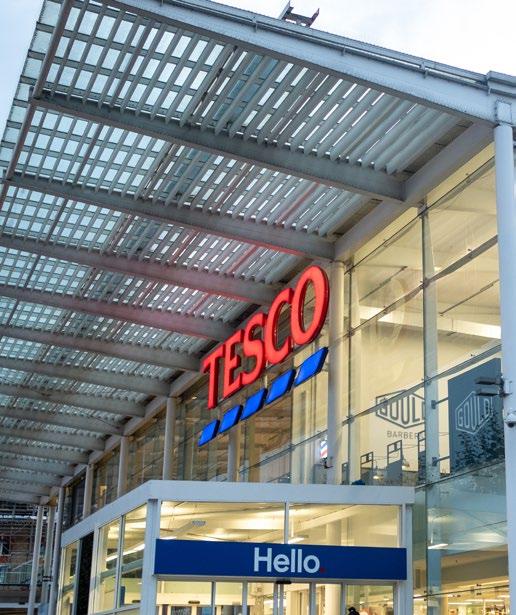







EDITOR: Tom Sieber @SharesMagTom
DEPUTY EDITOR: Ian Conway @SharesMagIan
NEWS EDITOR: Steven Frazer @SharesMagSteve
FUNDS AND INVESTMENT
TRUSTS EDITOR: James Crux @SharesMagJames
EDUCATION EDITOR: Martin Gamble @Chilligg
INVESTMENT WRITER: Sabuhi Gard @sharesmagsabuhi
CONTRIBUTORS:
Daniel Coatsworth
Danni Hewson
Laith Khalaf
Laura Suter
Rachel Vahey
Russ Mould
Shares magazine is published weekly every Thursday (50 times per year) by AJ Bell Media Limited, 49 Southwark Bridge Road, London, SE1 9HH. Company Registration No: 3733852.
All Shares material is copyright. Reproduction in whole or part is not permitted without written permission from the editor.
Shares publishes information and ideas which are of interest to investors. It does not provide advice in relation to investments or any other financial matters. Comments published in Shares must not be relied upon by readers when they make their investment decisions. Investors who require advice should consult a properly qualified independent adviser. Shares, its staff and AJ Bell Media Limited do not, under any circumstances, accept liability for losses suffered by readers as a result of their investment decisions.
Members of staff of Shares may hold shares in companies mentioned in the magazine. This could create a conflict of interests. Where such a conflict exists it will be disclosed. Shares adheres to a strict code of conduct for reporters, as set out below.
1. In keeping with the existing practice, reporters who intend to write about any securities, derivatives or positions with spread betting organisations that they have an interest in should first clear their writing with the editor. If the editor agrees that the
reporter can write about the interest, it should be disclosed to readers at the end of the story. Holdings by third parties including families, trusts, selfselect pension funds, self select ISAs and PEPs and nominee accounts are included in such interests.
2. Reporters will inform the editor on any occasion that they transact shares, derivatives or spread betting positions. This will overcome situations when the interests they are considering might conflict with reports by other writers in the magazine. This notification should be confirmed by e-mail.
3. Reporters are required to hold a full personal interest register. The whereabouts of this register should be revealed to the editor.
4. A reporter should not have made a transaction of shares, derivatives or spread betting positions for 30 days before the publication of an article that mentions such interest. Reporters who have an interest in a company they have written about should not transact the shares within 30 days after the on-sale date of the magazine.


and, as such, are written by the companies in question and reproduced in good faith.
WWelcome to Spotlight, a bonus report which is distributed eight times a year alongside your digital copy of Shares.
It provides small caps with a platform to tell their stories in their own words.
The company profiles are written by the businesses themselves rather than by Shares journalists. They pay a fee to get their message across to both existing shareholders and prospective investors.
These profiles are paidfor promotions and are not
independent comment. As such, they cannot be considered unbiased. Equally, you are getting the inside track from the people who should best know the company and its strategy.
Some of the firms profiled in Spotlight will appear at our webinars and in-person events where you get to hear from management first hand.
Click here for details of upcoming events and how to register for free tickets.
Previous issues of Spotlight are available on our website.
Members of staff may hold shares in some of the securities written about in this publication. This could create a conflict of interest. Where such a conflict exists, it will be disclosed. This publication contains information and ideas which are of interest to investors. It does not provide advice in relation to investments or any other financial matters. Comments in this publication must not be relied upon by readers when they make their investment decisions. Investors who require advice should consult a properly qualified independent adviser. This publication, its staff and AJ Bell Media do not, under any circumstances, accept liability for losses suffered by readers as a result of their investment decisions.




Yoojeong Oh, Investment Director
abrdn Asian Income Fund Limited (AAIF) targets the income and growth potential of Asia’s most compelling and sustainable companies. It does this by using a bottom-up, unconstrained strategy focused on delivering rising income and capital growth by investing in quality Asia-Pacific companies at sensible valuations.
Tim McCarthy, Chairman
Incanthera (AQSE:INC), the company specially focussed on innovative technologies in dermatology and oncology. Our current focus is Skin + CELL, its luxury skincare brand, utilising ground-breaking formulation and delivery expertise, to bring scientifically proven formulations to cosmetics and unmet skincare solutions.
Jean Roche, Fund Manager
Schroder UK Mid Cap Fund invests in a conviction portfolio of around 50 companies they think are positioned for innovation, disruption and growth.
In this article we reveal how small cap biotech and pharma stocks on the UK market have performed, including anything under a £1 billion market cap and excluding anything below £50 million.
WHAT DOES THE DATA REVEAL?
The table shows how some companies like Niox (NIOX), Animalcare (ANCR:AIM), Scancell (SCLP:AIM) and Avacta (AVCT:AIM) have produced stellar-to-decent returns over a five-year period.
Niox is a company which focuses on treating people suffering from respiratory diseases through its NIOX range of FeNO (fractional exhaled nitric oxide) devices has gained 370% over five years followed by York-headquartered animal healthcare business Animalcare with 53.1%.
In April, Animalcare reported a 3.8% rise in revenues to £74.4 million ‘reflecting improved performance’ in the second half with sales growth across all three product categories.
Scancell which is a biotech company focused on developing immunotherapies for cancer achieved a 48.1% on a five-year view.

The company’s shares jumped on 12 June this year after it announced an agreement with a major international biotechnology company. The unnamed company ‘will exclusively evaluate a Scancell investigational anti-glycan
monoclonal antibody for development of novel therapeutic products.’ Avacta has returned 34.2% and Futura Medical (FUM:AIM) – a developer of sexual health products (FUM:AIM) 27.4%.
Back in February
Guildford-based Futura Medical announced that its erectile dysfunction lead product Eroxon will be available in England and Wales without a doctor’s prescription having launched in the UK in March 2023. Early data shows that there is proven demand for Eroxon – circa 20% market share in the UK and Belgium and the company said it delivered its first meaningful revenues of £3.1 million following the launch of this erectile dysfunction product.
Companies that have not done that well over the past five years include gene and cell therapy pharma services outfit Oxford Biomedica (OXB) and Eco Animal Health Group (EAH:AIM) falling 55.6% and 63.9% respectively.
Oxford Biomedica has suffered due to the reduction in Covid-19 vaccine manufacturing sales – the company was a key manufacturer of AstraZeneca’s Covid-19 vaccine, however according to its most recent results for

the year ending 31 December 2023, there are signs of recovery. The firm saw growth exceed 50% in both orders and pipeline. With regards to Eco Animal Health, which specialises in treatments for poultry and pigs, the group might be over the worst after a positive trading update on 25 April this year. It has faced significant delays in its drug development pipeline but is investing heavily in product innovation. Analysts at Shore Capital have noted the company trades at a sizeable discount to Eco’s animal health peers.
Shares Spotlight
1Spatial
www.1spatial.com

1Spatial (SPA) is a growing software company, headquartered in Cambridge with over 1,000 customers around the world, spanning key sectors such as government, utilities, and transportation.
Its Location Master Data Management (LMDM) platform is used by enterprises and government bodies to make better business decisions through improved accuracy and sharing of location data.
1Spatial is successfully transitioning to a business that has productised its valuable intellectual property and data expertise into scalable software solutions, growing its recurring revenues and increasing its addressable market.
Location data, which describes any information that relates to the physical location of objects and boundaries, such as the location of a gas pipe or a boundary between two properties, impacts all aspects of our everyday lives.
It is the data that guides emergency services to our houses, which identifies where underground assets such as pipes and cables lie

demarks land boundaries for tax purposes and planning.
The demand for up-to-date location data has never been greater, due to the acceleration in digital transformation taking place across all industries.
Location data is a vital element in the delivery of faster and safer services, and because it is increasingly being used as the main point of reference when connecting multiple systems, it needs to be accurate and shareable.
An acknowledged leader in location data management
1Spatial’s software automates the process of bringing together data from different sources and maintaining that data for the long term, for use in customers’ systems, digital twins, or AI systems.
1Spatial’s platform is its patented rules engine, 1Integrate which validates, audits, cleanses, corrects, synchronises, and enhances both location and non-location data, and its self-service cloud portal, 1Data Gateway, through which data is submitted.
The strength of the LMDM platform means that 1Spatial is an acknowledged leader in complex, enterprise level projects, where location data is key. Its software underpins national projects such as the National Underground Asset Register in the UK, digital transformation across states, such as in Michigan and California, and by enterprises such as Google Real Estate Workplace Services in the US.


leading technology, provides it with the credibility, insight, and capital to launch innovative and exciting high margin SaaS solutions in large addressable markets.
1Spatial has recently launched two high-margin SaaS solutions, 1Streetworks in the UK and NG-9-1-1 in the US. These are ‘light’ versions of 1Spatial’s enterprise platform, tailored for specific applications, available at a lower price point via the cloud. Both target significant new markets and are expected to deliver gross margins in excess of 80%.
1Streetworks revolutionises traffic management plans for roadworks and represents an additional £400 million in annual revenue opportunity. In the UK, over four million low-speed road works occur annually, which require a plan to be produced.
These are usually created using outdated manual systems. By leveraging geospatial science and digitisation, 1Streetworks automates plan creation, reducing turnaround times from hours, days and even weeks to under two minutes,
1Spatial secured its initial contract with UK Power Networks in February with the product under trial with several institutions.
In the US, legislation mandates states to upgrade their emergency services to modern, location-based NG-91-1 systems. As part of this, each city and county need to submit its data to the state. 1Spatial’s NG9-1-1 SaaS solution enables them to do this via the cloud, in an automated manner that meets the legislative requirements, saving time and money.
Given the number of cities and counties to which this product is relevant, the addressable market is approximately $350 million in annual revenue.
The company has achieved material progress in its transition to a recurring revenue technology business with annual recurring revenue growing at 11% compound annualised growth rate over the past five years. Annual recurring revenue increased to £17.2 million (56% of revenue) in full year 2024 and is expected
It has a global customer base, proven, patented technology and powerful partners, and, as a leader in location data validation and sharing, is just at the start of its growth journey.
The UK has several listed software companies, most of which do not compete with 1Spatial directly but are strong in particular niches.
These range from Sage (SGE), a large-scale provider of accounting software, to smaller software companies such as IQGeo, a developer of geospatial productivity and collaboration software and Cerillion (CER), a specialist in telecommunications.
IQGeo is the closest peer to 1Spatial and has recently been bid for by KKR for 7.1x full year 2023 revenue.

GENinCode (GENI:AIM)
is a UK based company specialising in genetic risk assessment and prevention of cardiovascular disease (CVD) and ovarian cancer.
Cardiovascular disease is the leading cause of death and disability worldwide. The company’s products and technology have been developed to genetically risk assess CVD.
The company operates business units in the UK, Europe and the United States.
The company has just presented its preliminary results for the twelve months ending 31 December 2023, where it saw a 51% increase in revenues to £2.2 million (2022: £1.4 million) driven by growth across its UK and European businesses. The group is now starting its first commercial programmes in the US to complement its UK and European revenues which are summarised below.
CVD accounts for around 18 million deaths annually, representing approximately 31% of all deaths worldwide with the global cost of CVD estimated to reach approximately $1.04 trillion by 2030. Multiple studies have shown that an individual’s genetics contribute approximately 50% to the

development of CVD over a lifetime, highlighting genetics as a new and significant contributor to the onset of cardiovascular disease.
GENinCode’s polygenic (multiple gene) technology is at the forefront of preventive care and precision medicine treatment. The company’s tests combine molecular (DNA) analysis with clinical algorithms and AI bioinformatics to identify patients at CVD risk.
The company recently acquired Abcodia Limited; the Cambridge company focused on the prevention of ovarian cancer using the Risk of Ovarian Cancer Algorithm test (ROCA). The ROCA test recently received NICE guidelines recommendation for use in the NHS.
The company is focused on US clinical adoption with
polygenic risk assessment continuing to see advancing healthcare statements from the US American College of Cardiologists/American Heart Association (ACC/AHA), around increasing adoption of polygenic risk scores (PRS) to assess the risk of coronary artery disease (CAD).
GENinCode has its US accredited diagnostic laboratories in California with its US products, LIPID inCode and CARDIO inCode recently completing Early Access Programmes in the US market.
The Early Access Programmes will transition into commercial programmes to be the focus of growth in 2024.
LIPID inCode is a globally leading test for Familial Hypercholesterolemia (FH) with increasing recognition by the US Centres for Disease Control (CDC) of the importance of testing to
identify individuals suffering with FH as these individuals are at high risk of ‘earlier inlife’ onset of CVD.
CARDIO inCode is a ‘first in class’ test for the polygenic risk assessment of coronary artery disease.
The company filed its Food and Drug Administration (FDA) De Novo submission in November 2023 for market clearance and expects further updates from the FDA over the coming months.
In May 2023, the UK NHS announced the successful implementation of LIPID inCode to improve diagnosis and turnaround time for the testing of Familial Hypercholesterolemia (FH).
The implementation of this programme in the North of

England supports the NHS 10-Year plan to identify 25% of individuals in the UK suffering with FH. LIPID inCode is being delivered at a reduced cost to the NHS, with rapid turnaround times for testing and improved comprehensive diagnostic and risk assessment ‘direct to physician’ reporting. The company anticipates further expansion in LIPID inCode testing across other NHS regions and genetic lab hubs in 2024.
The company announced its collaboration with MVZ Uniklinikum, Germany in May
During 2024, the company expects to complete the following key deliverables:
✏ Significant increase in year-on-year revenue growth.
✏ Commercial expansion of LIPID inCode and CARDIO inCode across the US market.
✏ Implementation of LIPID inCode and CARDIO inCode testing in leading US healthcare institutions and Statebased healthcare systems .
✏ Progression of our De Novo FDA regulatory submission for the approval of the CARDIO inCode medical device to accelerate US sales.
✏ Expansion of the NHS programme for LIPID inCode and introduction of CARDIO inCode.
✏ Expansion of the MVZ Uniklinikum, Germany collaborative programme
✏ Build on our EU partnerships and develop our ongoing collaborative discussions with pharmaceutical companies.
✏ Following NICE guideline approval for The ROCA test, commence first commercial programs in the NHS and EU.
✏ Continued strengthening of the commercial, marketing and selling teams to support revenue growth.
✏ With cardiovascular disease the leading cause of death and disability worldwide, the company has a strong and growing competitive clinical advantage to identify patients at risk of cardiovascular disease and improve preventive care.
2023. Uniklinikum represents the largest treatment centre in Germany for patients suffering with FH and the German team is following a similar pathway to the NHS with state-based reimbursement for our initial LIPID inCode test.
The Spanish market saw a strengthening in revenue through 2023 with its core tests all seeing growing demand. CARDIO inCode is being piloted for implementation in the Spanish region of Extremadura.
In March 2024, the ROCA test received NICE recommendation as the preferred test for ovarian cancer surveillance in individuals at elevated risk of ovarian cancer who do not undertake risk reducing surgery. The new NICE guidance is focused on identifying and managing familial and genetic risk of ovarian cancer.
With US commercial operations now starting to complement the growing UK and EU revenues, the company anticipates strengthening revenues across the business over the coming year. The company is focused on commercial programmes with leading US hospital institutions whilst developing its UK NHS relationship and expanding its EU business.